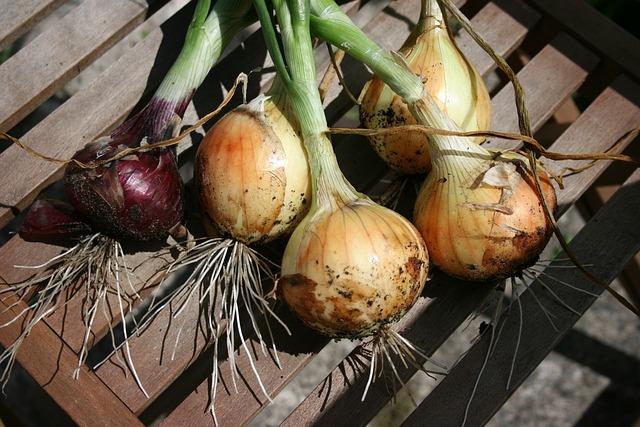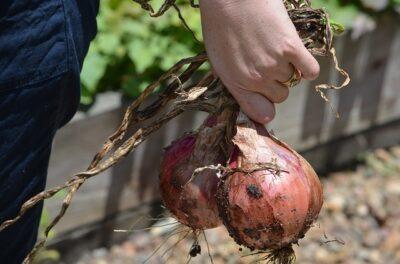Onions may well have been among the first edible foods grown in domestic gardens, as the history of the domestic onion goes back thousands of years – seeds have been found in ancient Egyptian tombs — and they are still one of the most common vegetables found in modern kitchens.
Most people who grow their own onions plant them during spring, but did you know it is possible to get a head start on your harvest by planting in the fall, as well? There are several advantages of planting in the fall. First, it is a time when there a fewer garden chores that need done. Also, onions that have been planted this time of year are often more productive and reliable than their spring counterparts. They are less vulnerable to common pests that enjoy munching on them.
Like their garlic cousins, onions can be very hardy and cold tolerant. You simply have to keep a few things in mind if you choose to plant them during autumn.
Planting Your Onions
Fall onions tend to do well if planted between early September to late October (provided the ground is not frozen). It often works well to plant them following the harvest of a summer crop such as potatoes, as you already have ground that has been dug.
While it is possible to grow onions from seed, it is much more common (and easier!) for backyard gardeners to grow them from sets or immature bulbs. Over winter, these sets have the opportunity to establish a healthy root system before their green shoots emerge in the spring.
Looking For Onions For Your Garden? Get Them From A Family-Owned Company You Can Trust!
Choose a relatively weed-free area that gets full sun and that has firm, well-draining soil. To avoid possible disease, do not plant onions where you have grown other onions, carrots, beetroot or garlic during the previous season.
Sets of onions should be planted about one-inch deep, allowing the tip of the bulblet to slightly poke above ground level. If the tips are on the long side, you can trim them down to the shoulder of the bulb first. Space your onions 3-4 inches apart.
Caring for Onions
One of the nice things about planting onions during the fall is that they don’t really require a great deal of care. Your sets will only grow for a few weeks before the colder temperatures send them into a kind of semi-hibernation mode.
Still, you need to ensure that the area in which they are planted has few weeds and that they do not get waterlogged.
Sets of onions may be watered once after they’ve been planted, and after that normal fall rain should be enough to give them the water that they need. If you live in an area that gets excessive fall rain, you may not find it worth it to plant during autumn.
Varieties to Plant
Planting onions during fall is not something that can be done with every variety. Many types simply will not survive freezing temperatures, so you have to choose carefully. For gardeners in zone 6 or colder, you should cover your plants with straw or mulch and use plastic sheeting or tunnels to help them survive the winter.
Among the best varieties of onions to plant during fall are:
- Senshyu yellow – this cold hardy onion produces a semi-flat, average-sized bulb with yellow skin.
- Radar – this type of onion has light-brown skin and boasts a mild to medium flavor. This type of onion also stores better than many other varieties of onion when harvested during June.
- Electric – a red-skinned onion that has red and white flesh. This variety has a medium to strong flavor and can be stored for up to four weeks.
- Valencia – these onions have a golden to brown skin and a mild, somewhat sweet flavor. They tend to do well in almost any region.
- Talon F1 – these form hard, uniformly shaped bulbs with golden brown skin and white flesh.
- Red baron – a very pretty variety that has deep red skin. The flesh is mostly white, but has red to purple inner rings.
- Evergreen hardy bunching onion – one of the most cold-tolerant varieties! Can be overwintered in even northern regions such as Vermont. Grows in dense, green clumps.
- Bandit leeks – produces nice blue-green flags and a thick white base with very little bulbing.
Your Spring Harvest
Overwintered onions are generally producing bulbs by May and reach their full size by June. Harvest your onions before or shortly after you see a scape appear.
These onions will not last in storage as long as other onions, so it is best to use them fresh — in the same way you would use scallions.
Do you have any fall-planting tips for onions? Share your tips in the section below:
 Off The Grid News Better Ideas For Off The Grid Living
Off The Grid News Better Ideas For Off The Grid Living





